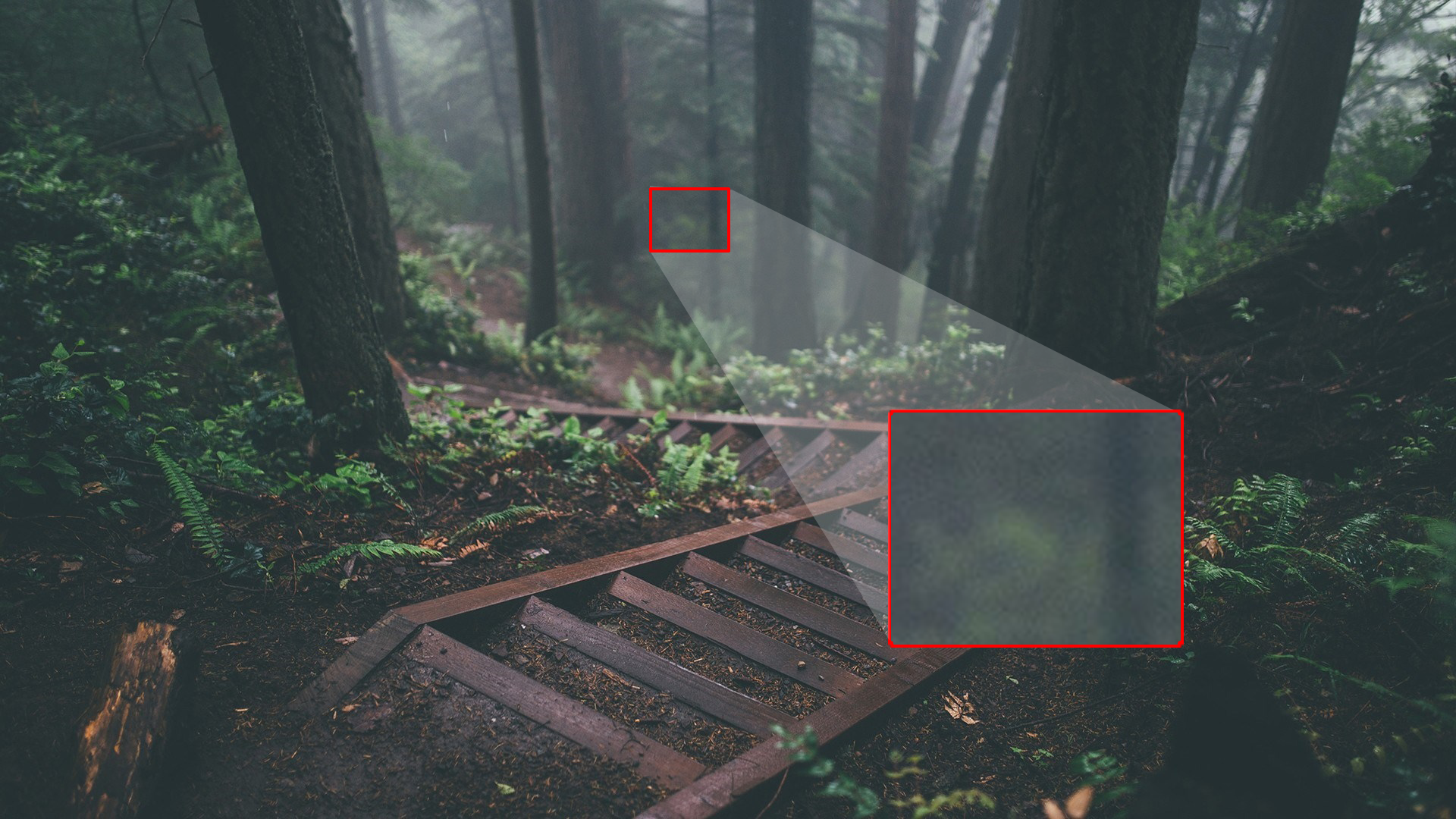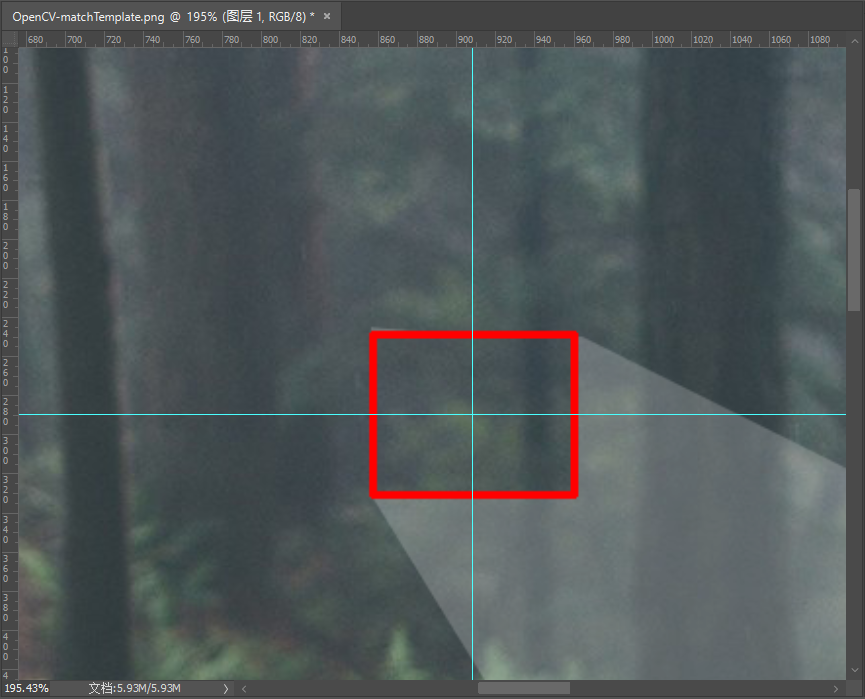使用OpenCv在输入图片中匹配模板图片的位置
![]()
前言
做一个项目需要在Android中定位目标位置,现已经可以得到Android屏幕状态,于是需要一个方法来实现这个定位功能,自己也写过1个定位的方法奈何反应太慢,在网上找资料时发现OpenCv已经实现此功能,可以直接使用,欣喜若狂,特此记录一下。
OpenCv是什么?
- OpenCV是一个基于BSD许可(开源)发行的跨平台计算机视觉和机器学习软件库。
- OpenCV是用于图像处理、分析、机器视觉方面的开源函数库.
测试用例
随便找个图片作为输入
![]()
随便截取一部分作为模板
![]()
需求描述
至此我们需求为在输入图片中匹配寻找模板图片,如下图:
![]()
实现步骤
拿到Mat实例
1
2
| Mat m_input = Imgcodecs.imread(input_path);
Mat m_template = Imgcodecs.imread(template_path);
|
创建比较结果图
1
2
3
| int result_rows = m_input.rows() - m_template.rows() + 1;
int result_cols = m_input.cols() - m_template.cols() + 1;
Mat g_result = new Mat(result_rows, result_cols, CvType.CV_32FC1);
|
调用 matchTemplate() 进行模板匹配
1
| Imgproc.matchTemplate(m_target, m_template, g_result, Imgproc.TM_CCORR_NORMED);
|
将结果图进行归一化
1
| Core.normalize(g_result, g_result, 0, 1, Core.NORM_MINMAX, -1, new Mat());
|
- 归一化就是要把需要处理的数据经过处理后(通过某种算法)限制在你需要的一定范围内。
- 归一化是为了后面数据处理的方便,其次是保证程序运行时收敛加快。
- 归一化的具体作用是归纳统一样本的统计分布性。
- 归一化在0-1之间是统计的概率分布,归一化在某个区间上是统计的坐标分布。
- 归一化有同一、统一和合一的意思。
- 归一化的目的,是使得没有可比性的数据变得具有可比性,同时又保持相比较的两个数据之间的相对关系,如大小关系;或是为了作图,原来很难在一张图上作出来,归一化后就可以很方便的给出图上的相对位置等。
得到模板位置
1
2
3
| Core.MinMaxLocResult mmlr = Core.minMaxLoc(g_result);
Point matchLocation = mmlr.maxLoc;
System.out.println(matchLocation.x + "-----" + matchLocation.y);
|
返回模板的中间坐标
1
2
3
4
| double x = matchLocation.x + (m_template.cols() / 2);
double y = matchLocation.y + (m_template.rows() / 2);
double[] tile = {x, y};
return tile;
|
Code:
OpenCv环境搭建移步此文章
1
2
3
4
5
6
7
8
9
10
11
12
13
14
15
16
17
18
19
20
21
22
23
24
25
26
27
28
29
30
31
32
33
34
35
36
37
38
39
40
41
42
43
44
45
46
47
48
49
50
51
52
53
| import org.opencv.core.Core;
import org.opencv.core.CvType;
import org.opencv.core.Mat;
import org.opencv.core.Point;
import org.opencv.imgcodecs.Imgcodecs;
import org.opencv.imgproc.Imgproc;
import java.io.IOException;
public class FindTileCoordinates {
static {
System.loadLibrary(Core.NATIVE_LIBRARY_NAME);
}
public double[] searchFor(String input_path, String template_path) {
Mat m_input = Imgcodecs.imread(input_path);
Mat m_template = Imgcodecs.imread(template_path);
int result_rows = m_input.rows() - m_template.rows() + 1;
int result_cols = m_input.cols() - m_template.cols() + 1;
Mat g_result = new Mat(result_rows, result_cols, CvType.CV_32FC1);
Imgproc.matchTemplate(m_input, m_template, g_result, Imgproc.TM_CCORR_NORMED);
Core.normalize(g_result, g_result, 0, 1, Core.NORM_MINMAX, -1, new Mat());
Core.MinMaxLocResult mmlr = Core.minMaxLoc(g_result);
Point matchLocation = mmlr.maxLoc;
double x = matchLocation.x + (m_template.cols() / 2);
double y = matchLocation.y + (m_template.rows() / 2);
double[] tile = {x, y};
return tile;
}
public static void main(String[] args) throws IOException {
double[] doubles = new FindTileCoordinates().searchFor(
"input.png",
"template.png"
);
System.out.println(doubles[0] + "-----" + doubles[1]);
}
}
|
结果
![]()
符合要求
![]()
文章到此就结束啦,感谢查阅。




![]()


